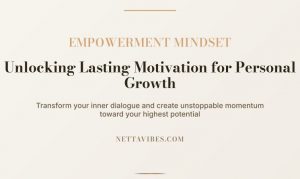True habit formation is less about perfection and more about personalization, flexibility, and self-acceptance. There’s no single best routine, only what fits the rhythms of your life, brings you authentic joy, and supports your evolving intentions.
Habits: A Reflection of Your Unique Life
What works for one may never work for another. Reliable habit formation begins with acknowledging and respecting your personal rhythms, such as the time of day when you feel most energized or what genuinely motivates you to stick with something. Choose actions and cues that fit seamlessly into your existing context, whether you’re a student, a parent, a night owl, or a busy entrepreneur. This flexibility ensures new routines feel less like obligations and more like helpful tools for daily life.
Start Where You Are, Grow As You Go
Start small by picking one tiny change that feels easy and meaningful, like drinking a glass of water upon waking. Stack new habits onto existing ones by attaching your new behavior to something you already do, such as performing a sun salutation every time you make coffee. Celebrate small wins by tracking your progress and rewarding yourself, dopamine makes repetition enjoyable and sticky.
Embracing Adaptation and “Good Enough”
Perfection is not required. The most resilient habits are those that flex with you. If a strategy stops working, gently adjust it instead of punishing yourself. Maybe you need to change the time, swap the cue, or find a new motivator. Use self-reflection and feedback to pivot, recognizing that progress is made through repeated, self-chosen effort, not rigidity.
Progress in Balance: Skills, Joy, Discipline, Intention
Only choose habits that support your balance and growth today. Some seasons require discipline, others reward rest or joyful change, and still others nurture new skills or deeper intentions. Honor your current needs and allow your habits to evolve with you, respecting moments of structure alongside moments of letting go.
Reliable Cognitive Grounding
Habit formation happens as the brain develops automaticity through regular, consistent repetition in stable contexts:
- Use clear cues, such as specific times, locations, or feelings, to activate your habit.
- Make it rewarding in the moment — even a simple mental “good job!” counts.
- Miss a day? Simply restart, sustainability, not perfection, is the goal.
Practical Example
Imagine you want to build a reading habit, but your energy and time vary daily. Keep your book visible where you naturally pause, even if you only read a paragraph at a time. Track your reading using a sticky note or an app, including “micro” moments of engagement. If evenings become busy, try mornings, lunchtime, or audiobooks. Your version of the habit can change along with your lifestyle.
The Power of Free Will in Growth
You’re always free to take or leave parts of any advice or framework. Use only what resonates with you. Over time, your practiced habits become part of you: not as rigid perfection, but as flexible, balanced patterns that truly serve your journey.
Understanding the Science of Habit Formation
Science shows habit formation is more complex than the common myth of “21 days to form a habit.” Recent research highlights that, on average, habits can take between two to five months to form, with variability from just four days to almost a year depending on the individual and behavior (University of South Australia, 2025). The brain gradually shifts control of behaviors from conscious effort to automatic routines stored in the basal ganglia, optimizing energy use as pathways get reinforced through repetition.
Personalized Habit Formation
Research also emphasizes the importance of personalization in habit formation. People who select habits aligned with their values and intrinsic motivations are more likely to succeed (Fogg’s Tiny Habits method). Self-selected habits that fit well into existing routines benefit from increased autonomy and motivation, key drivers in sustained behavior change.
Role of Environment and Context
The stability and consistency of the environment where a habit is practiced also predicts success. Performing habits in the same place and similar conditions strengthens neural associations, making behaviors easier to trigger automatically. Adjusting environments to support cues, like placing workout clothes by your bed or leaving a book on your kitchen table — increases habit adherence.
Habit Loop: Cue, Routine, Reward
Habits form through a loop of cue, routine, and reward. An environmental or internal cue triggers the routine, which produces a reward that reinforces the behavior. This loop helps explain why habits, once formed, require less conscious thought, freeing cognitive resources for other tasks.
Neuroplasticity and Habit Change
Neuroplasticity, the brain’s capacity to rewire itself, supports habit formation and change. Repeated behaviors strengthen neural pathways, making the actions more automatic and easier to perform over time. This adaptability underscores the benefits of starting small and scaling habits progressively to build lasting routines.
Cognitive and Social Influences
Habit formation is also influenced by beliefs, intentions, and social learning. People often replicate behaviors observed in their social groups, motivated by goals and reinforcement. Emotional and cognitive frameworks shape whether habits stick or change, highlighting the importance of supportive environments and self-efficacy.
Habits are a blend of automatic responses and intentional actions shaped by individual motivations, contexts, and social factors. A balanced, personalized approach that embraces flexibility, small wins, and self-acceptance aligns with how our brains naturally develop routines. By respecting your unique rhythms and leveraging science-backed strategies, you can cultivate lasting habits that support sustained growth and authentic wellbeing.



Such an awesome reminder Netta Vibes!
Will be intouch soon😃
Absolutely